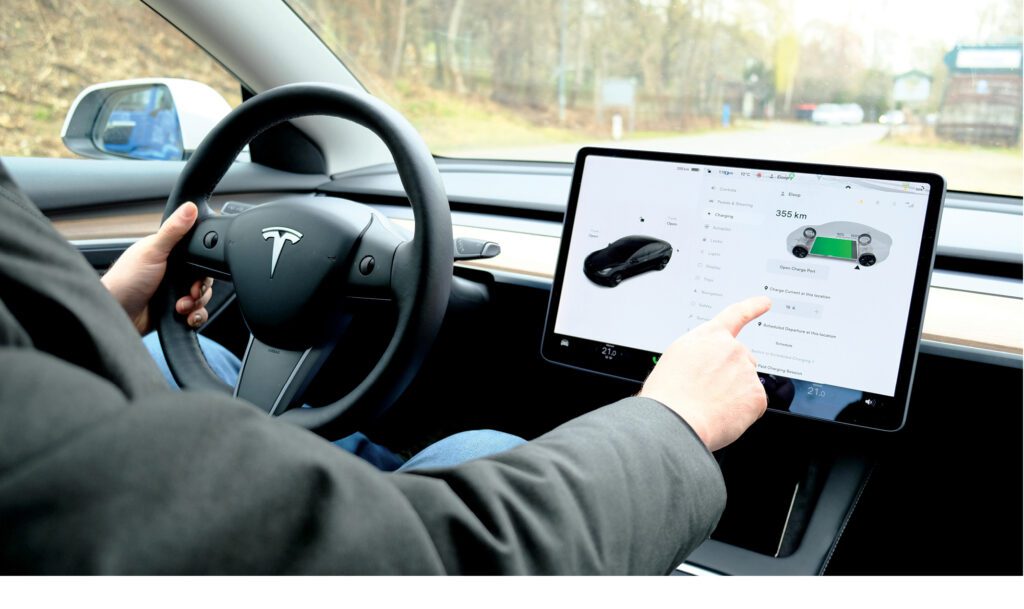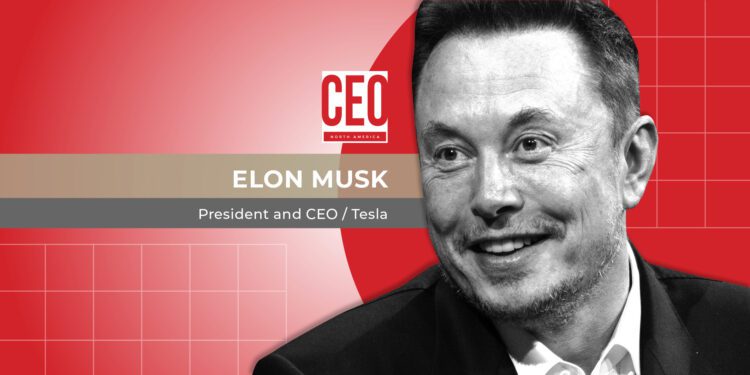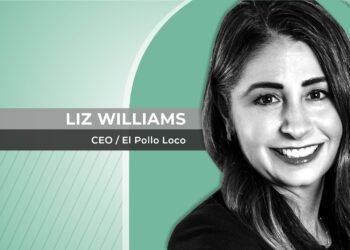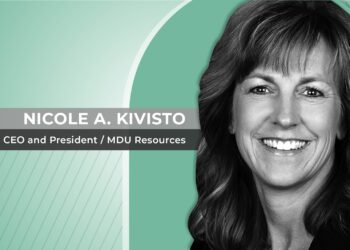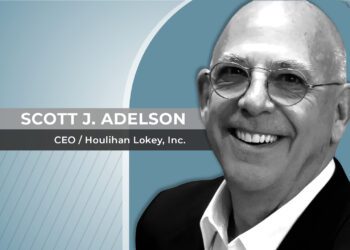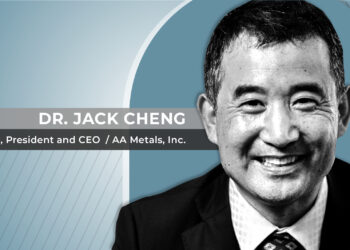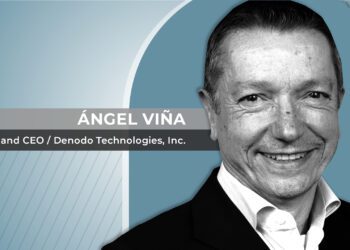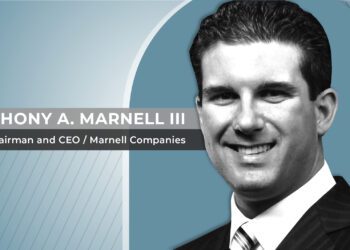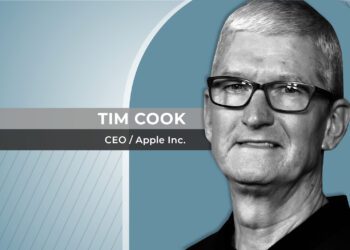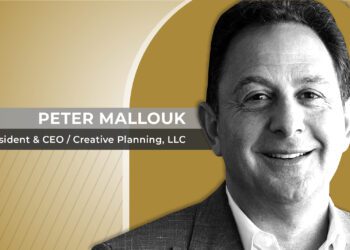

Elon Musk
President and CEO / Tesla
Tesla, led by CEO Elon Musk, faces an EV market slowdown and declining revenue but remains committed to sustainable energy. Despite challenges, Tesla is ramping up new vehicle models and advancing AI and autonomous driving technologies, pushing for growth and profitability in a dynamic landscape.
Tesla, a pioneer in the electric vehicle (EV) industry, is navigating a complex landscape marked by evolving market dynamics and technological advancements. Despite facing a slowdown in the EV market and a consequent dip in revenue, Tesla—led by CEO Elon Musk—remains committed to its mission of accelerating the world’s transition to sustainable energy.
Market Challenges Dampen Tesla’s Revenue
Tesla has been navigating a rocky road lately, with a slowdown in demand for electric vehicles and rising production costs. “The EV adoption rate globally is under pressure,” Musk shared during a recent quarterly earnings call with shareholders. “A lot of other auto manufacturers are pulling back on EVs and pursuing plug-in hybrids instead.”
This market shift has led to a decline in Tesla’s revenue, influenced by both macroeconomic factors and seasonal trends. Vaibhav Taneja, Tesla’s Chief Financial Officer, noted the company has seen a seasonal decline in revenues quarter-over-quarter due to an uncertain macroeconomic environment and other reasons.
However, the impact of pricing actions was largely offset by reductions in oil unit costs, and “In fact, if we exclude Cybertruck and Fremont Model 3 ramp costs, the revenue from Autopark, auto margins improved slightly,” Taneja said.
Although Tesla would prefer to see the EV market thriving, he noted that “as other OEMs are pulling back on their investments in EV, there is increasing appetite for credits, and that means a steady stream of revenue for us.”
“It is only a matter of time before we exceed the reliability of humans—and not much time with that.”
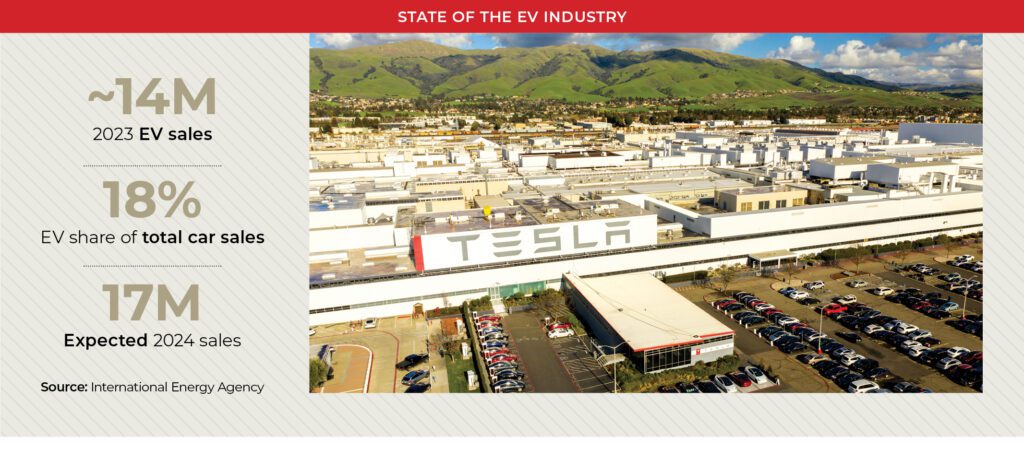

Tesla has enacted a variety of initiatives to spur demand for its cars, including lowering the price of both the purchase and subscription options for FSD, launching leasing specials for the Model 3 in the U.S. for $299 a month, and offering attractive financing options in certain markets. “We believe that our awareness activities, paired with attractive financing, will go a long way in expanding our reach and driving demand for our products,” Taneja said.
Accelerating New Model Production
Amid these market challenges, Tesla is not slowing down its production efforts, but rather ramping it up for Tesla’s new and existing vehicle models. “We’ve updated our future vehicle lineup to accelerate the launch of new models ahead of schedule,” Musk told shareholders, adding that the company is now expecting startup production in early 2025 or even late 2024, rather than the previously announced timeline of the latter half of 2025.
The new vehicles will incorporate aspects of Tesla’s next-generation platform, as well as aspects of its current platform, but can be produced on existing manufacturing lines. Musk believes this will enable Tesla to “get to over 3 million vehicles of capacity when realized to the full extent.”


AI-Driven Autonomous Innovation
Tesla’s advancements in artificial intelligence (AI) and autonomous driving technology continue to be a cornerstone of its innovation strategy, and the company has made significant progress with its Full Self-Driving (FSD) software.
Tesla has now turned on FSD Version 12 for all cars with the necessary hardware in North America, with about 1.8 million vehicles equipped. “If you haven’t experienced this, I strongly urge you to try it out. It’s profound and the rate of improvement is rapid,” Musk told.
“We’re really headed for … an autonomous future.”
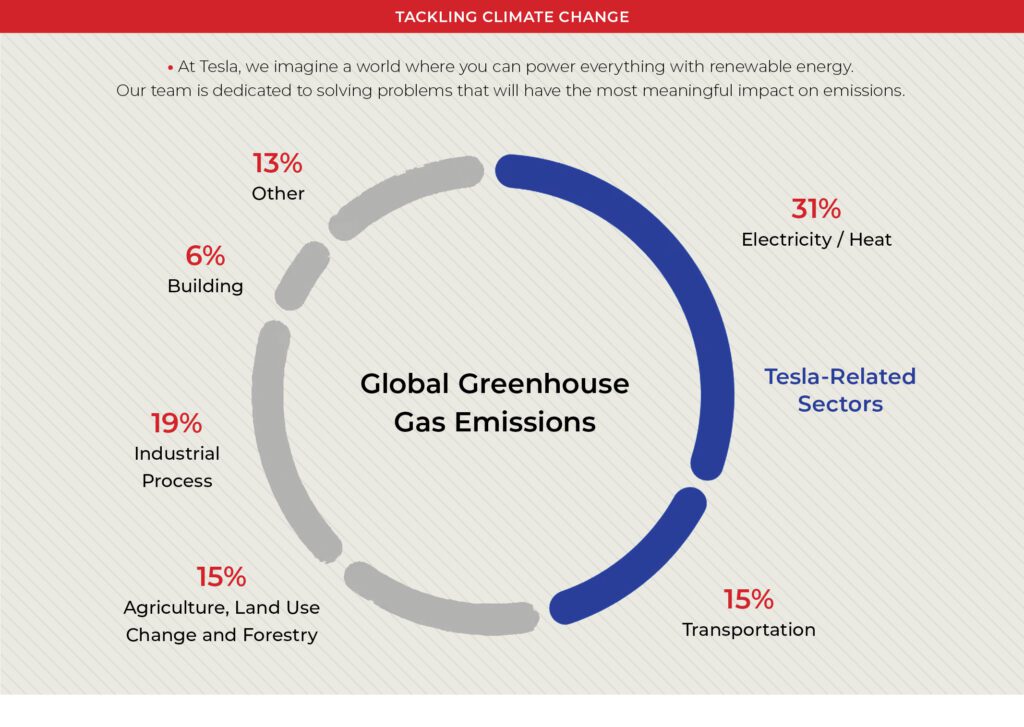

This AI-driven approach is designed to improve the safety and reliability of autonomous vehicles. Ashok Elluswamy, Director of Autopilot Software, emphasized the robustness of their AI training methodology, stating, “We train hundreds of neural networks each week and validate safety through millions of clips and real-world miles.”
Additionally, the company has focused on enhancing its AI infrastructure and manufacturing processes, with Musk noting that the company has installed and commissioned 35,000 H100 computers and expects to reach around 85,000 by the end of the year for AI training. This investment in high-performance computing is crucial for advancing Tesla’s AI capabilities. Additionally, the development of the 4680 battery cell technology represents a significant leap in energy efficiency and cost reduction.
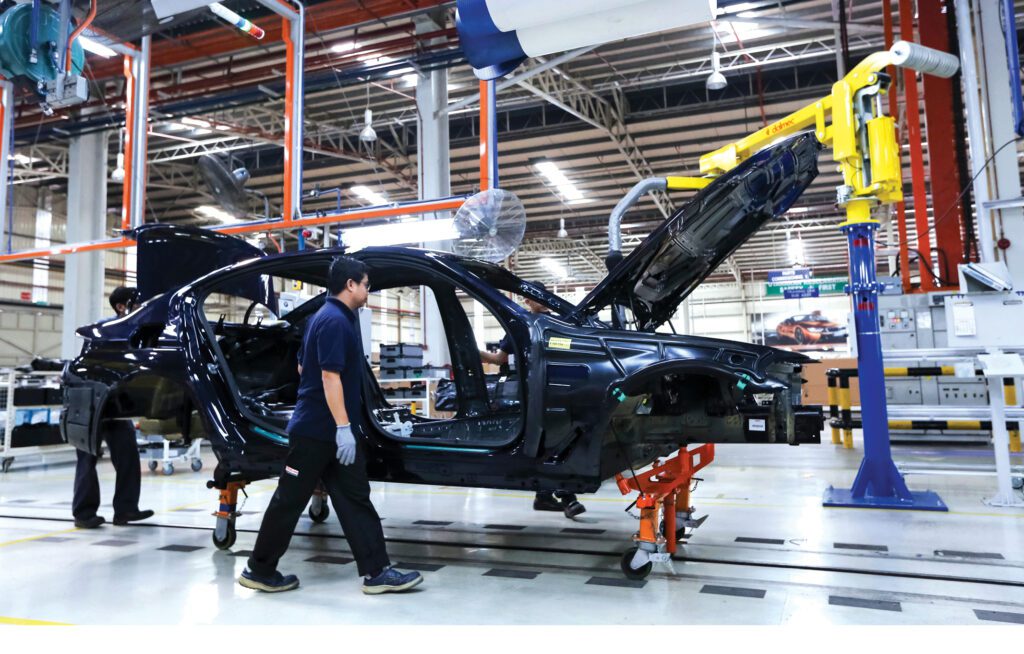

However, the leadership team was questioned during the shareholders’ call about the pathway toward regulatory approval for unsupervised FSD in the U.S. A handful of states have already adopted autonomous vehicle laws, paving the way for operations.
“It’s actually been pretty helpful that other autonomous car companies have been cutting a path through the regulatory jungle, which is absurd,” noted Elluswamy. “These approvals are happening rapidly. I think if you’ve got at scale, a statistically significant amount of data that shows conclusively that the autonomous car has, let’s say, half the accident rate of a human-driven car, I think, that’s difficult to ignore because at that point, stopping autonomy means killing people.”


He offered a comparison: “In my view, this will be much like elevators. Elevators used to be operated by a guy with a relay switch. But sometimes that guy would get tired or drunk or just make a mistake, and shatter somebody in half between floors. Now, we just get in an elevator and press a button—we don’t think about it. In fact, it’s kind of weird if somebody is standing there with a relay switch. And that will be how cars work. You just summon the car using your phone, you get in, it takes you to a destination, you get out.”
“We believe that our awareness activities, paired with attractive financing, will go a long way in expanding our reach and driving demand for our products.”
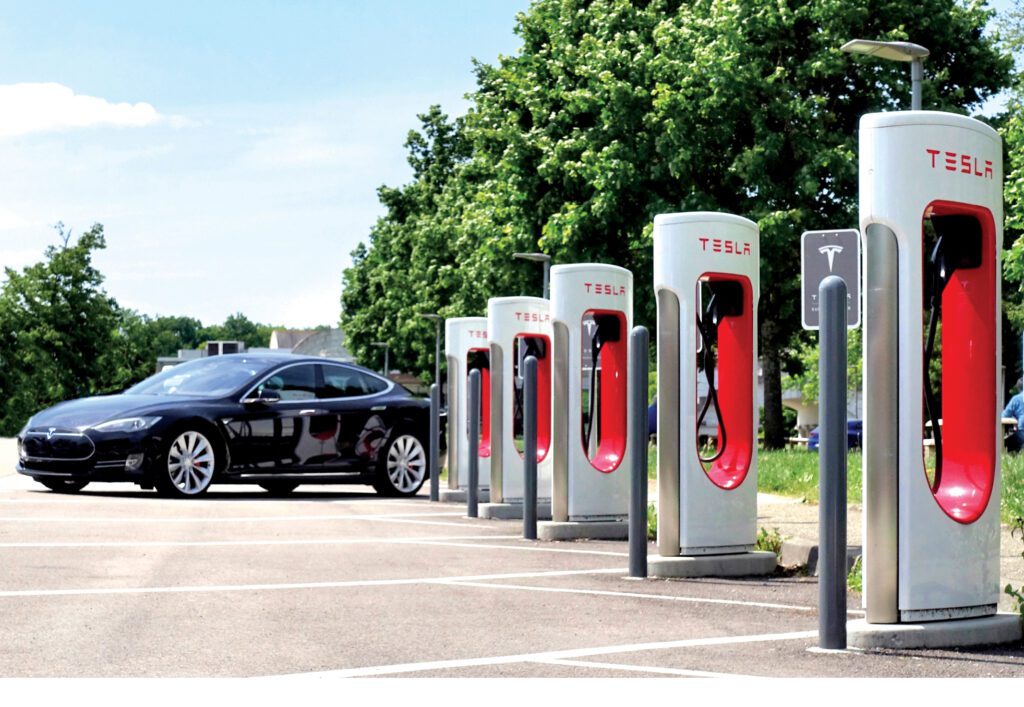

Optimizing for Growth and Profitability
Despite current market challenges, Tesla remains focused on driving growth and profitability. The company’s energy storage business, particularly the Megapack, has reached record profitability, with deployments hitting an all-time high in Q1.
“We expect the energy storage deployments for 2024 to grow at least 75% higher from 2023. And accordingly, this business will begin contributing significantly to our overall profitability,” Taneja shared. “Note that there is a bit of lumpiness in our storage deployments due to a variety of factors that are outside of our control, so deployments may fluctuate quarter-over-quarter.”
Furthermore, the company is optimizing its operations to improve cost efficiency, getting “hyper-focused” on CapEx efficiency and utilizing installed capacity more effectively, Taneja said. This approach includes reducing headcount, recently cutting by more than 10%, and streamlining production processes to save over $1 billion annually.
While Tesla might be facing setbacks in revenue right now, Musk remains committed to his belief that EVs will become a mainstay of the auto industry. “In the future, gasoline cars that are not autonomous will be like riding a horse and using a flip phone,” he stated. “And that will become very obvious in hindsight.”
